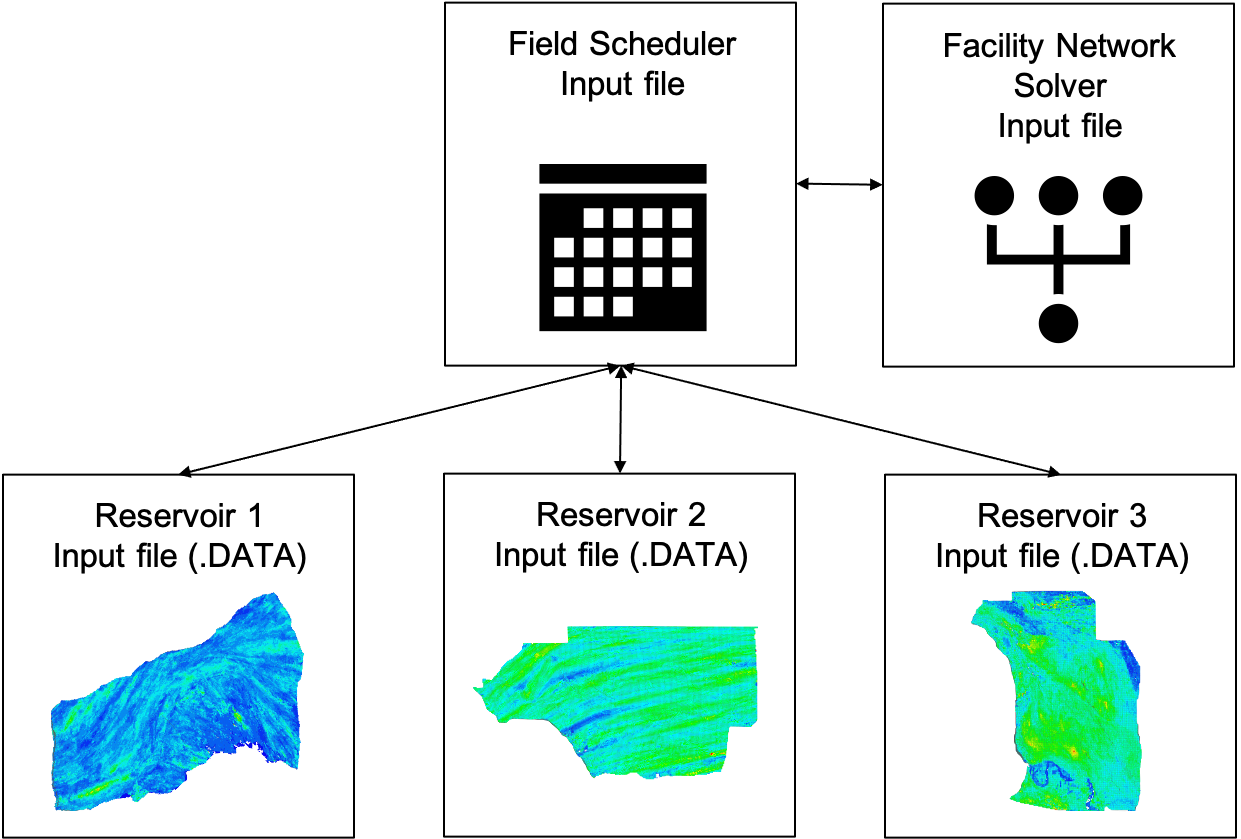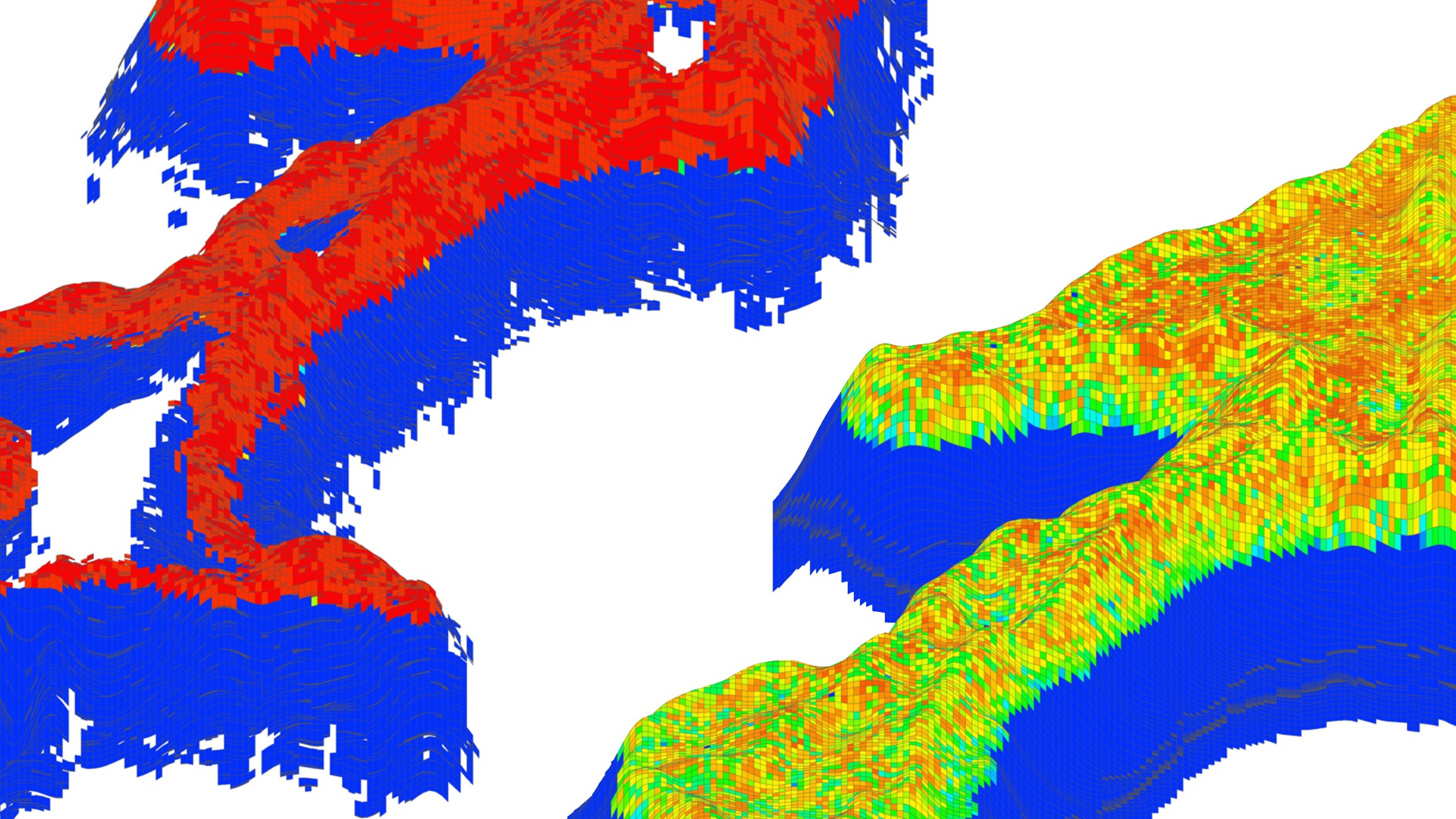Maracuya: ECHELON Showcases Its Multi-Reservoir Simulation Capacity
Seamless coupling of multiple reservoir models with shared production targets and a gathering network.

Seamless coupling of multiple reservoir models with shared production targets and a gathering network.

Jan 13 2022
Eni uses the ECHELON field scheduler and facility network solver to balance groups producing from multiple reservoirs.

Maracuya is a greenfield consisting of three dry gas reservoirs characterized by good petrophysical properties, with homogeneous and well connected sands. The three models have approximately 1M cells each and use a simple two-component (water-gas) black-oil model. The wells use nonlinear inflow models and are subject to maximum drawdown limits. Field production is managed by assigning a different plateau target rate to three groups combining wells perforated in different reservoirs, i.e., a multi-reservoir simulation capacity is needed. Furthermore, all wells are produced through the same gathering network, and the impact of network backpressure on the production needs to be accounted for.
ECHELON supports multi-reservoir coupling by delegating well allocation tasks to an independent field scheduler able to balance groups producing from multiple reservoirs. ECHELON comes with its own integrated facility network solver (FNS) for seamless inclusion in reservoir engineering workflows. FNS can model complex production and injection network topologies, including bifurcations, where pressure losses in pipes are interpolated from precomputed hydraulic tables.

These figures show ECHELON is able to honor the gas production target and respective plateaus of each group, while gas production for each reservoir adapts to their differential depletion. Coupling to the facility network solver (FNS) results in a shorter plateau, due to an underestimation of network backpressure in the model without network. This is more easily seen in the figure (bottom) where the tubing-head pressure and the gas production rate of a representative well are shown; the well stops producing earlier when the network is accounted for.
We thank Eni S.p.A for the permission to publish the data contained in this case study.
Deep dive into our software product and its efficacy.

Evaluating the productivity enhancements of Fishbones in fractured carbonate reservoirs using high-performance cloud-based reservoir simulation.
View case study →
Workflow to manage the operational challenges in an unconventional field development requires full field simulation.
View case study →
ECHELON software tackles an extremely difficult compositional model. A demonstration of the robustness of ECHELON software.
View case study →